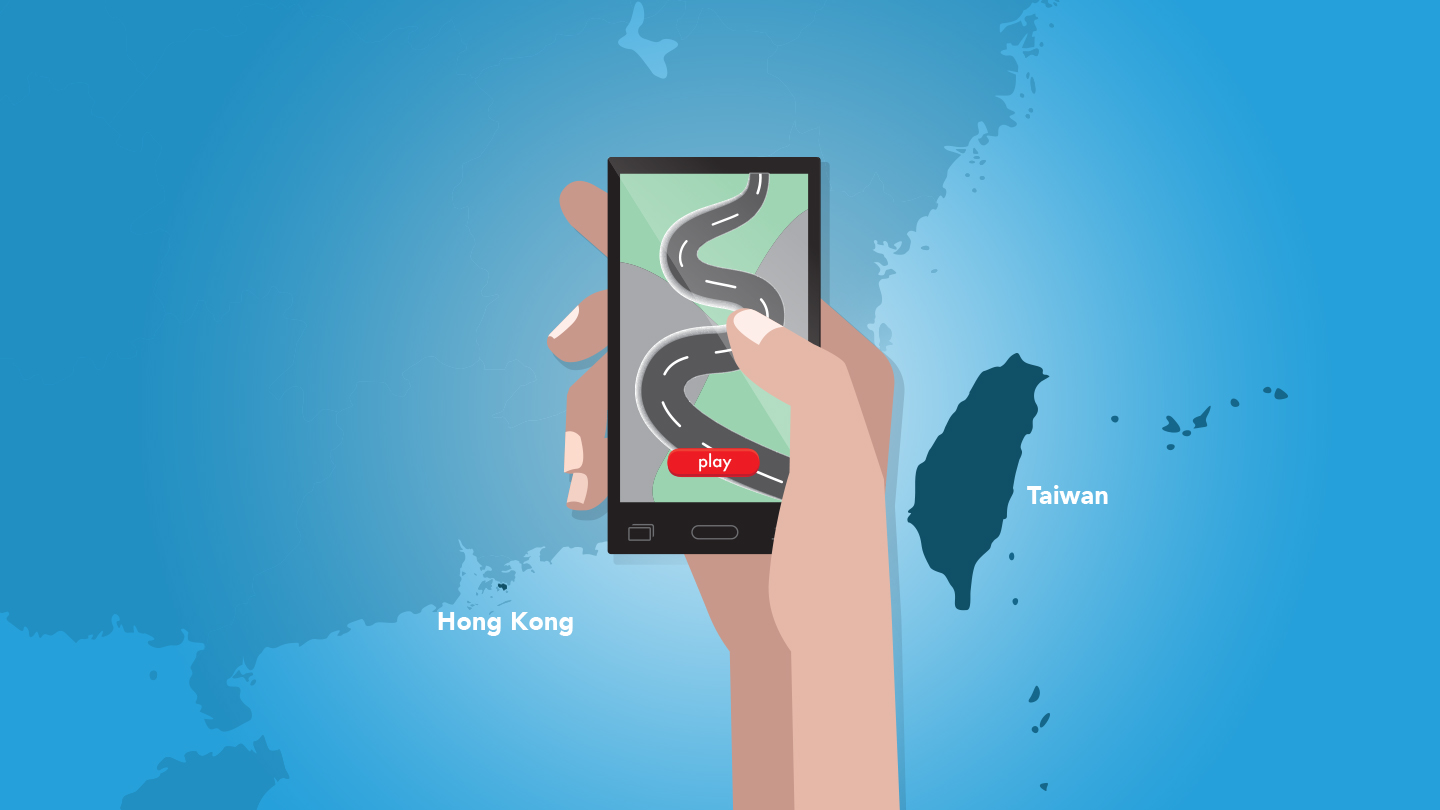Gaming, Industry News & Events
Taiwan and Hong Kong…what every dev looking to localize there should know
Mar 29, 2017

Gaming, Industry News & Events

This is a guest post by Josh Burns, a consultant with extensive experience helping leading mobile gaming companies expand their reach into Asian markets. The post is part our ongoing coverage of international markets and is the final one in his series on APAC.
If you’re looking to localize your mobile game in Asia in order to capitalize on the appetite for mobile games in growing markets, you might want to think about Taiwan and Hong Kong, both of which offer robust opportunities. Both are large markets despite having smaller populations (Taiwan alone generated over $400M in mobile games revenues in 2015), and smartphone penetration is very high in each (73.4% in Taiwan, 69.8% in Hong Kong). Average annual revenue from games per user is good, too: in Taiwan it’s $116.60/user and in Hong Kong is a widely recognized “whale” market. According to Carsten Lammert, who does business development at Gamania, the Taiwanese market is much larger in terms of population, but in Hong Kong, user retention tends to be higher and ARPU is about 1.5-2 x higher, so a customized marketing strategy should be used in each region.
Here’s what else you need to know about these markets:

Josh Burns
In Mainland China, there are literally several hundred app stores, which can make distribution of an app there a challenge. But in Hong Kong and Taiwan, Google and Apple are the primary distribution channels, which makes distribution as easy as it is in the US. (That said, in Hong Kong and Taiwan, there are still many in-game payment methods, like local pre-paid cards, that are not yet well-supported by Apple and Google.) There are also far fewer regulatory hurdles that restrict what type of game can be distributed, so social casino games are fine outside of the Mainland. And in some ways, reaching users is even easier than it is here — in Taiwan, for example, there is ubiquitous wifi, so mobile gamers can play literally everywhere. Also, much of Taiwan’s economy is rooted in tech, so the population there is very tech savvy and always looking for the latest and greatest.
Particularly in Hong Kong, global games (those that originate in North America and Europe) do well, with the Clash Royale and Candy Crush titles ranking fairly high recently. Clash of Clans and Hearthstone have also performed well. Hardcore games are also very popular with players in Hong Kong, and as Carsten shared with me, real-time strategy games with social functions tend to be quite successful in Hong Kong. Meanwhile, in Taiwan, there’s a strong history of PC gaming, and other traditional game genres like RPG and strategy are preferred. That said, generally speaking, games from China and Japan tend to be more appealing there vs. Western content, with many games leveraging a pay-to-win model.
Hong Kong and Taiwan are interesting markets with a lot of opportunity, and usually partnership opportunities there (really the best way to go about localizing) are part of an overall China strategy and deal. Few publishers exclusively focus on importing games from elsewhere solely into Taiwan and Hong Kong. “Working with a local partner can give a game a significant edge,” Arthur Chow, CEO of 6waves, told me, noting that a good partner can take on the initial localization work, local marketing, and live operations, increasing the chances of competing against local content in the market. When it comes to partnership opportunities, it’s important, as with all business in China, to do the work (and socializing!) to see who is the best fit in terms of capability, vision, and commitment.
It is possible, however, to self-publish in just Hong Kong and Taiwan. If you choose to do so, focus on high-quality localization of the game and app store materials, using Traditional Chinese text. (In Mainland China, you’d use Simplified Chinese.) It’s also the norm there, as in much of Asia, for mobile games to be promoted in person and offline to drive installs, such as in stores, at events, and via outdoor media. As Arthur pointed out, outdoor media is particularly important because both Taipei and Hong Kong are among the most densely populated cities in the world. “Users tend to be impressed by offline ads for mobile games,” he said, “they make them think that the game is higher quality and then they’re more willing to invest their own time and money in it.” My advice is to wait and see if you’re seeing strong user stats via organic traffic before you invest in a really aggressive offline marketing campaign.
Another thing you need to be aware of is the importance that the messenger app LINE has to marketing. Also, according to Arthur, players also expect a lot of activities (live ops) and community events — that’s truly key for retention and monetization in the region.
Compared with Mainland China, Taiwan and Hong Kong are relatively small markets — but in some ways they’re easier for Western developers to break into. Localizing there can be fairly straightforward, but it can also be part of a larger strategy to break into Mainland China. Both these smaller markets are well-developed and have a taste for sophisticated games, including those from outside of APAC. If you’re interested in localizing there, do your research on what genres of games do well in each market, explore partnerships for distribution, and if you do choose to self-publish, get up to speed on regional best practices.